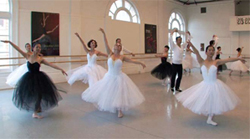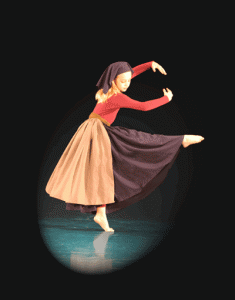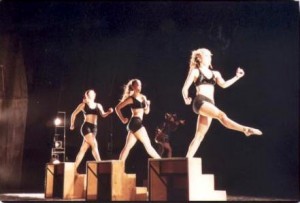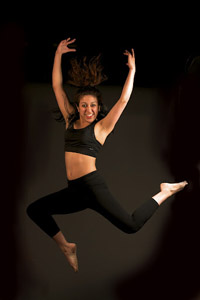
Skyline High Dancers, courtesy Stephen Woo
Tonight, our Kickoff Fundraiser for Adults in Ballet – Philanthropy for Dance takes place at Rumbo Al Sur here in Oakland, CA. It gives me great pleasure to be able to begin this journey and to be able to help one of the best known Bay Area High Schools around – the Skyline High School Dance Dept.
Skyline High School is one of the most diverse High Schools in the country. Skyline’s Performing Arts Department provides a performing arts education in drama, dance, instrumental music, vocal music, and technical theatre. A typical school-year season includes 12 large-scale productions, frequent off-campus performances, and multiple opportunities to compete. Performances are held in the 975-seat Farnsworth Theater. (courtesy of wikipedia.org)
The Dance Dept. is comprised of 3 levels, beginning, intermediate and advanced. All levels are by audition, save for the beginning level. Both the intermediate and advanced levels have the opportunity to perform throughout the year and a major component of all the classes is allowing the students to create their own choreography.
Recently I had the great pleasure of interviewing the Dance Dept. Director, Dawn James and her 2 Dance Captains, Hannah Ayasse and Yelena Keller – all very special people!!
This is Dawn James’, Dance Dept. Director, 20th year at Skyline High. Her focus at Skyline is a modern jazz style, with a strong ballet technique base. She gives her students a lot of traditional ballet terminology and uses her modern jazz style to do that. She loves to see “the passion just ignite in her students”. And, from all accounts, she receives very high praise from her students.
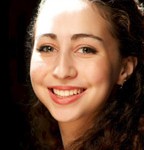
Hannah Ayasse
Hannah Ayasse, senior and co-Dance Captain, started dancing in elementary school and remembers her sister taking her to see Skyline’s dance productions and knew then what she wanted to do. She’s put the strong emphasis on learning the art of choreography taught in the classes — to her advantage. She began choreographing her freshman year and since then has choreographed about two dances for each show. She’s found her true passion in story telling through movement and was awarded Best Choreographer her sophomore and junior years. In her own words: “…[it was through] the amazing opportunity to choreograph that I discovered how dance has the capacity to carry great emotions and stretch the soul.”
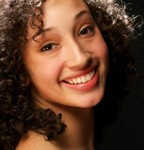
Yelena Keller
Yelena Keller, senior and co-Dance Captain, also started dancing at an early age in elementary school Being a very creative person with interests in a variety of different forms and expressions of the arts, dancing to her means being able to bring it all into one spontaneous moment – all different forms of the arts into one. As she puts it “…[dance] allows me to take on a role, the music – figure out a way to make the movement your own. A lot of creativity that goes into dance whether your choreographing or not you have to figure out a way to make the movement your own.”
As Dance Captain, their duties are integral to helping the classes run smoothly, the rehearsals and the performances – they’ve even created a Facebook group that they use to get the info out to students, and organize potlucks with fellow students Especially if there are sub teachers, they will take on more of the teaching duties. In short, they are Ms. James’ “go to girls”.
They both have a true passion for dance – Hannah is off to college at George Washington University in the fall and hoping to minor in dance and perhaps be a dance teacher one day. Yelena has been accepted at Sarah Lawrence College and will be joining their dance program, either majoring or minoring in Dance.
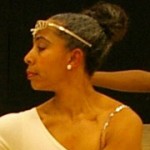
Dawn James
They both give very high praise to Ms. James for her work and dedication to her students and to the Dance Program – in Hannah’s words: “All I know is that if I could have the effect on a child’s life that Ms. James has had on mine, I would feel extremely fulfilled.” And Yelena expresses – “…every day that I spend in Ms. James’s dance class is a gift that I will cherish for the rest of my life.”
When asked about how they will put the donation from Adults in Ballet to use, the major consensus amongst all 3 ladies is they would like to start a yearly, ongoing scholarship for those students wishing to continue their dance training beyond their years at Skyline. And, secondarily, among other things, a new mirror wall is very much needed for the dance studios. Since Skyline depends entirely on private donations to keep operating, we are pleased to be able to help them.
Both ladies will be performing this week at their end of year dance performance – “Bodies In Motion” taking place this Thursday, Friday and Saturday, May 17 – 19, at 7:30 pm in the Farnsworth Theatre, on the Skyline High School campus, 12250 Skyline Blvd. in Oakland. Please click here for more information.
Brava Ladies!!






